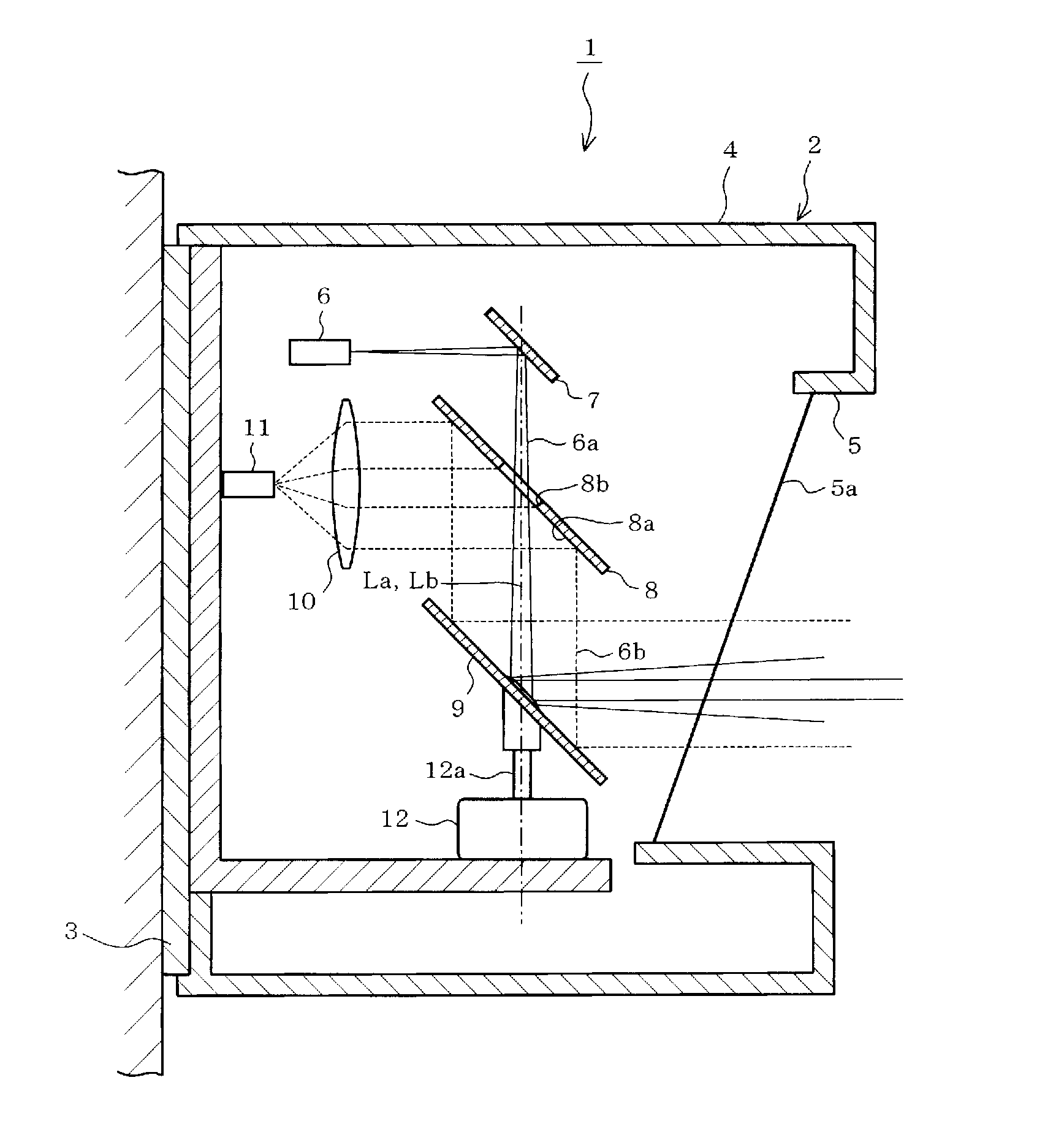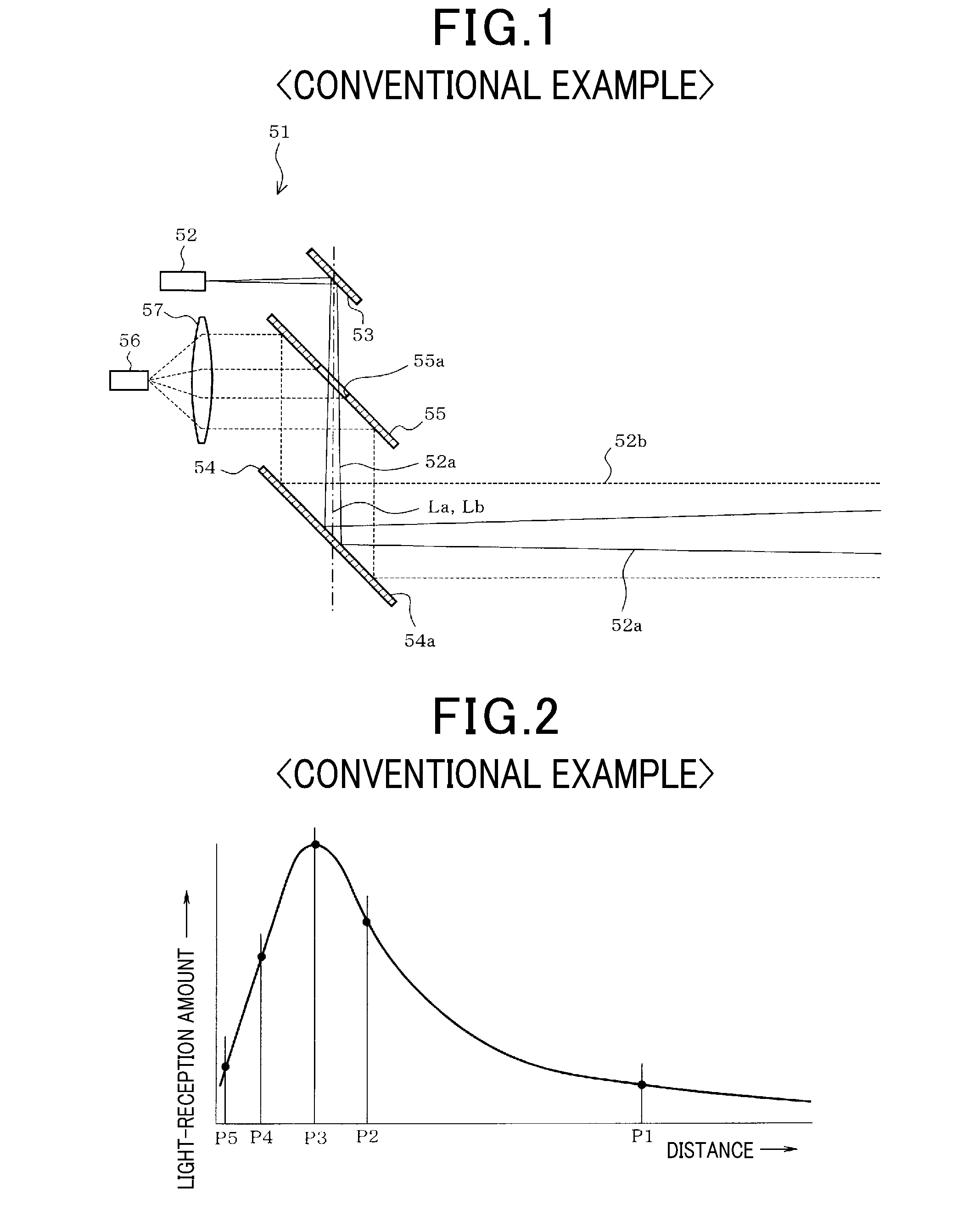Laser radar apparatus
a radar and laser technology, applied in the field of laser radar apparatus, can solve the problems of large loss of light reception, low reflectivity of fog and the like, and cannot be detected, so as to increase the distance to and from the detecting unit, increase the light reception amount, and strong light intensity
- Summary
- Abstract
- Description
- Claims
- Application Information
AI Technical Summary
Benefits of technology
Problems solved by technology
Method used
Image
Examples
first embodiment
[0039]A first embodiment of the present invention will be described with reference to FIG. 6 to FIG. 8.
[0040]As shown in FIG. 6, a laser radar apparatus 1 according to the first embodiment includes an apparatus main body 2. The apparatus main body 2 has a main body base 3 and an apparatus case 4. A laser-light irradiation opening 5 is formed in the apparatus case 4. The laser light radiation opening 5 is provided with a cover 5a that is integrated with or separate from the apparatus case 4. The cover 5a is capable of transmitting laser light.
[0041]Furthermore, a laser light emitting unit 6 that emits laser light, a reflection mirror for emission 7, a reflection mirror for light reception 8, a rotating mirror 9 used for both expansion of outgoing light and light reception, a detecting unit 11 that receives, through a light reception lens 10, laser light reflected by an object, and a motor 12 that rotates the rotating mirror 9 are provided inside the apparatus case 4.
[0042]The laser l...
second embodiment
[0058]FIG. 10 shows a second embodiment. A rotating mirror 20 differs from the rotating mirror 9 according to the first embodiment. Other configurations are similar to those according to the first embodiment.
[0059]In the rotating mirror 20, a flat reflective surface 20A1 that is formed into a flat planar shape is formed in a center portion of a reflective area E that reflects the outgoing light 6a. A sloped reflective surface 20A2 is formed in a peripheral portion of the center portion. The sloped reflective surface 20A2 configures a sloped form that makes the outgoing light 6a incident on the sloped reflective surface 20A2 spread to the periphery of an optical axis La1 of the outgoing light 6a emitted from the flat reflective surface 20A1, after intersecting with the optical axis La1. In addition, on a reflective surface 20A of the rotating mirror 20, an area further towards the outer side than the reflective area E functions as a light receiving surface 20A3 for the reflected ligh...
PUM
 Login to View More
Login to View More Abstract
Description
Claims
Application Information
 Login to View More
Login to View More - R&D
- Intellectual Property
- Life Sciences
- Materials
- Tech Scout
- Unparalleled Data Quality
- Higher Quality Content
- 60% Fewer Hallucinations
Browse by: Latest US Patents, China's latest patents, Technical Efficacy Thesaurus, Application Domain, Technology Topic, Popular Technical Reports.
© 2025 PatSnap. All rights reserved.Legal|Privacy policy|Modern Slavery Act Transparency Statement|Sitemap|About US| Contact US: help@patsnap.com



